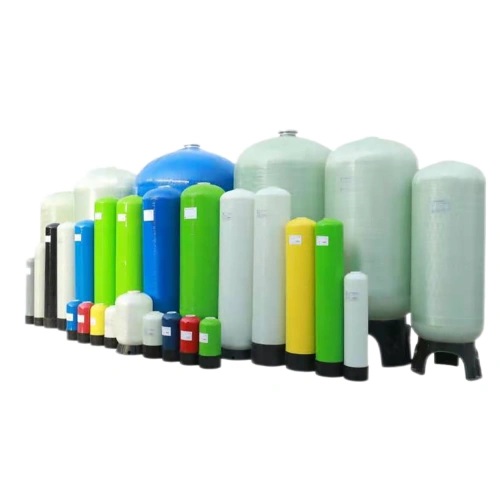
Potential Challenges of Using Fiberglass Reinforced Plastic Tanks
Despite their numerous benefits, fiberglass tanks are not without their challenges. Concerns about UV degradation, structural integrity at welds, and the need for regular maintenance can complicate their use. Furthermore, ensuring compliance with evolving regulatory standards adds another layer of complexity for wastewater management operators. These factors underscore the importance of continuous innovation and adaptation within the fiberglass tank manufacturing sector to address potential limitations and maintain its role as a key component of sustainable wastewater treatment solutions.
With the increasing importance of environmental considerations, the shift towards more sustainable wastewater treatment practices is expected to drive greater adoption of fiberglass technology. With advancements in manufacturing technologies and a growing focus on environmentally friendly materials, fiberglass tanks are expected to remain an integral part of the future of wastewater management, aligning with industry goals of efficiency, reliability, and environmental sustainability.
History of Fiberglass Tanks
Fiberglass-reinforced thermoset plastic, commonly known as fiberglass, was introduced as a viable alternative to traditional materials like steel and iron in the wastewater treatment industry starting in 1948. The initial use of fiberglass in centrifugal cast pipes helped address the significant corrosion problems faced by the crude oil production sector.
Over the following decades, advancements in manufacturing technologies, including polyester and epoxy resins in the mid-1950s, led to the widespread adoption of fiberglass tanks and pipes in the chemical industry.
By the 1960s, fiberglass had expanded its applications to include the underground storage and treatment of flammable and combustible liquids, as well as the treatment of industrial and municipal water, wastewater, and pulp and paper.
Read more about the role of fiberglass tanks in wastewater treatment
This period also marked a significant shift, as manufacturers began developing nationally recognized standards and testing methods for fiberglass storage and pipe systems, enhancing their reliability and effectiveness in wastewater management.
Thanks to its advantages, such as its high strength-to-weight ratio, corrosion resistance, and ease of installation, fiberglass has become a popular choice for various types of tanks used in wastewater treatment, including neutralization tanks, storage tanks, and treatment vessels.
Its light weight and exceptional durability have enabled the effective use of fiberglass tanks in various industries, reinforcing their role as a fundamental component of modern wastewater systems.
Today, fiberglass tanks are renowned for their superior durability and low maintenance requirements, which enhances their use in wastewater treatment facilities and contribute to the overall safety and efficiency of these systems.
Wastewater Treatment Applications
The importance of fiberglass tanks is increasing in various aspects of wastewater treatment due to their durability, resistance to corrosive environments, and ease of installation. These tanks perform multiple functions within treatment facilities, enhancing the overall efficiency and effectiveness of wastewater management systems.
Storage and Treatment
Fiberglass tanks are essential for the storage and treatment of wastewater and effluent in wastewater treatment facilities. They provide a reliable solution for containing wastewater before treatment, helping to minimize the leakage of untreated effluent into the environment. The tanks are specifically designed to withstand exposure to harsh chemicals and constant humidity, common elements in wastewater environments.
Chemical Balance and Treatment
During the treatment process, various chemicals are often added to balance pH levels and facilitate the removal of solid particles. For example, sulfuric acid or sodium hydroxide can be used to achieve the required acidity levels. Fiberglass tanks are ideal for storing these chemicals due to their robust construction, which resists corrosion from chemical exposure, ensuring safety and longevity.
Odor Control
Odor control is another important application of fiberglass tanks. Wastewater treatment can produce unpleasant odors. That can be harmful to local communities. Fiberglass products, such as odor-proof covers, are used to seal wastewater tanks and effectively control odor emissions without being exposed to corrosion from gas flow. These solutions help maintain a better environmental relationship with the surrounding areas.
Sludge Treatment
Fiberglass tanks are also used for sludge treatment and removal. The tanks can be equipped with polymer chemicals to help remove excess water from the sludge. Thus reducing its volume for more efficient transport to landfills. This application is crucial in managing the byproducts of wastewater treatment processes.
Durability and Cost-Effectiveness
Despite the high initial cost associated with fiberglass tanks. Their long-term durability and low maintenance requirements can lead to significant cost savings over time. Unlike other materials that may corrode or leak, fiberglass tanks are designed to last. Making them a practical investment for wastewater treatment plants.
Certification and Size
Certification plays a vital role in ensuring that fiberglass septic tanks meet the necessary performance and safety standards. Tanks must comply with NSF/ANSI standards for potable water (NSF/ANSI 61) or wastewater components (NSF/ANSI 46) to obtain the necessary permits and pass inspections.
Furthermore, determining the correct size of a septic tank is a legal requirement that varies by region. It is often determined by factors such as the number of bedrooms or the expected daily water flow rate. Adhering to these specifications is not only essential for compliance with regulations. But it is also crucial for maintaining property values and avoiding construction delays.
Challenges and Limitations
Fiberglass tanks are widely used in wastewater treatment systems due to their advantages. Such as superior corrosion resistance, lightweight construction, and low maintenance requirements. However, several challenges and limitations must be considered when using fiberglass-reinforced plastic (FRP) tanks in such applications.
Material Degradation
A major challenge associated with fiberglass tanks is their susceptibility to UV damage. Even though these tanks offer a certain level of UV resistance. However, prolonged exposure to direct sunlight can significantly reduce their lifespan. If appropriate protective materials are not used during construction or if the tanks are not adequately maintained.
Manufacturers must incorporate specialized resin blends, high-quality components, and additional coatings to enhance UV protection, especially for above-ground tanks in harsh environments.
Structural Limitations
Fiberglass tanks are not one-piece vessels; they are constructed in layers that represent potential weak points where leaks can occur. This structural characteristic, along with the tanks’ fragility and temperature limitations, raises concerns about their long-term safety in harsh environments. Furthermore, chemical sensitivity can lead to manufacturing defects that compromise their functionality over time.
Maintenance Requirements
Although their maintenance requirements are lower compared to conventional materials, fiberglass tanks still require periodic inspections and maintenance. Neglecting maintenance can increase the risk of failures, as minor issues. Such as hinge corrosion or gasket gaps, can escalate into major problems that disrupt wastewater management operations. In environments where corrosion is prevalent. Such as sewage systems, maintenance costs can increase significantly due to the need for continuous monitoring and repairs.

























